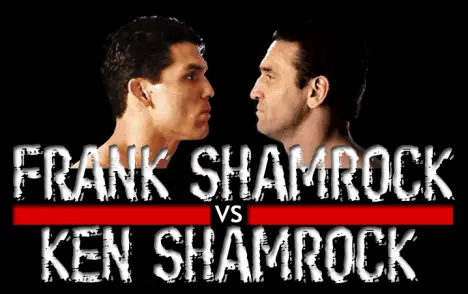This post may contain affiliate links to products or services which, if you purchase, may result in my earning commissions at no additional cost to you.
My relationship with police officers is somewhat trifurcated – respect, fear, and entertainment. I respect and appreciate officers and know that without them the world would actually be a worse place. I fear them – which is more a product of culture – and find it difficult to not think that every cop I see is out to get me. And I am incredibly entertained by them – who hasn’t watched and episode of COPS and found it impossible to change the channel. It is difficult to imagine the stressors that cops face and how they deal with them – fighting (specifically boxing) has long been viewed as an outlet for them.

On May 23, 2008 the Wall Street Journal ran an article that surprised many people entitled “Beat Cops: why police officers are becoming some of the world’s toughest fighters”. This article shocked many people who still viewed MMA as a savage sport akin to “human cock fighting” and, considering it was still against the law in 18 states at the time, it was a mildly controversial topic for a worldwide newspaper that normally focuses on business and financial information.
The article was intriguing for many reasons. First it was written by a woman, Hannah Karp. Secondly, as mentioned earlier, it was featured in the Wall Street Journal. Thirdly, Hannah outlined her premise for the article by stating that “from the beginning, cage fighting — an aggressive combination of punching, kicking, wrestling and carnage that is illegal in 18 states — has had a fundamental challenge: Where to find the toughest, meanest, most violent people in the world who aren’t already behind bars. Increasingly, the answer is the police station.” This opening sentence set the tone of the article in such a way that the reader would suppose that Hannah would make the correlation that police officers are, in fact, violent and therefore they actually belong in a cage where “carnage” is taking place. But that wasn’t the direction of the article and, if you know the subject of the piece, couldn’t be further from the truth. The article profiled a Utah State Trooper by the name of Travis Marx who is also an MMA fighter.
The police have always had a relationship with boxing and martial arts. The over-played stereotype of the police and “punching stuff” has been the crux of many a joke and parody and it has been over-played in any movie that takes place in Boston or New York. But, as with any stereotype there is a little truth in it. Boxing has been used as “occupational therapy” for a long time for police – it’s a way to blow off steam, get a good workout and learn control and discipline. But only recently have they started seeing the merits of incorporating grappling (Judo, Wrestling, and Jiu-Jitsu) and other striking skills to their training as well.
Just think of the last episode of COPS you watched where some bad guy leads the cops in a car chase, they finally corner him, he gets out of the car and now there is a foot pursuit. The officers usually corner him again and, with guns (or Tasers) drawn, order him to the ground where he can be cuffed and put in the patrol car. Occasionally though the criminal doesn’t run but will instead fight back – how do you react if you get punched in the face?
This was the question that was posited to Travis Marx while still a green trooper. What would happen if a bad guy took a swing at him? How would he react, what would he do, would he shoot the guy? There were a lot of unanswered questions so Travis signed up at a local gym and was quickly forced into becoming a “professional” fighter (there wasn’t an amateur class at the time and Travis took a fight a month and a half after joining the gym!). He was hooked and soon after he moved toNew Mexicowhere he now lives, trains, coaches, and prepares for his next Bellator fight.
Of course not all cops become professional fighters and not all of them even “like” getting punched but out of this recent wave of “barbarism and carnage” a useful tool has emerged. Officers who get training in all facets of offensive and defensive combat sports are less likely to resort to violence and brutality. In fact, one Utah police station started having professional fighters come in and teach the officers moves from a range of martial arts, including punches and submission holds – what was the result? “Since launching the new program, the department says it has cut the use of Tasers by about one-third and the use of pepper spray by half”!fessional” fighter (there wasn’t an amateur class at the time and Travis took a fight a month and a half after joining the gym!). He was hooked and soon after he moved toNew Mexicowhere he now lives, trains, coaches, and prepares for his next Bellator fight.
It’s only a natural progression for police officers to eventually get into the ring or cage. They are being trained in these sports and they need a place to test and hone their skills. These skills help them stay safe – which keeps us safe as well. So next time you think about running from the cops, remember that it isn’t the 9mm or the Taser you should fear but maybe is the perfectly executed triangle choke.
By the way – I found out that not all cops are out to get me.
FIGHTERS IN COMBAT OFFICIAL SPONSOR:




